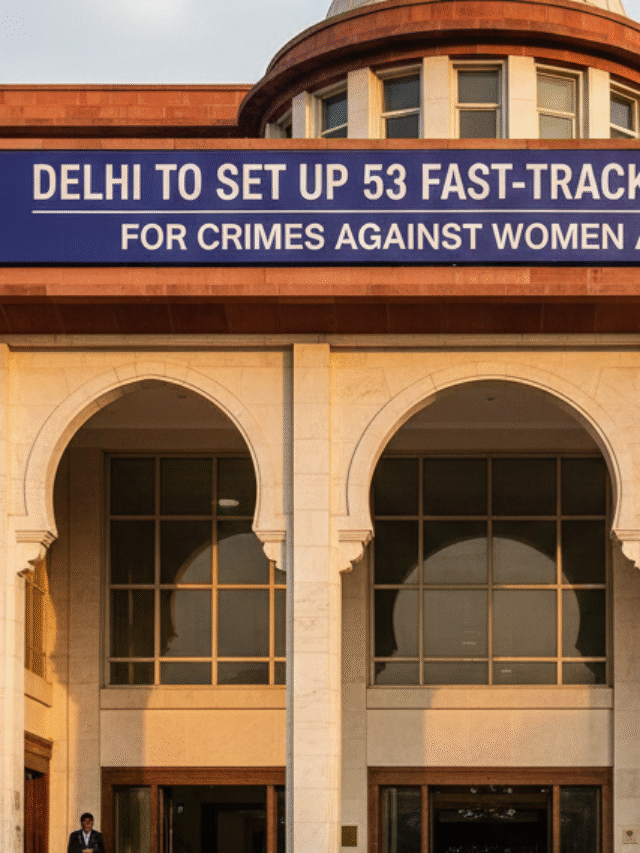White collar crime in Indian Law
Introduction of white-collar crime: White-collar crime is identified as a crime perpetrated by someone from the upper level of society and from a respectable section of society. This offence is actually committed in the course of the business. People who commit this crime typically have a greater knowledge of technology, their specific fields, specializations, and so forth.
In recent years, white-collar crime has changed dramatically. They are also seen as dedicated in large corporations with a diverse variety of operations. As a consequence, we may argue that these offences are frequent in commerce, trade, academia, medicine, and so on. Although the criminal profile has shifted dramatically in the last few years, old traditional crimes in the country have been gradually replaced by white-collar crimes.
The main difference between blue & white crime is that blue crime criminals come from the lower classes, whereas white crime criminals come from the upper classes and carry out their crimes in a well-organized manner. They maintain their social standing until the violation is revealed.
Historical Background
A sociologist from the U.S., Edwin Sutherland, was the first one to describe white-collar crime around the globe. He characterized this offence as being committed by a person of a higher social position in contrast to individuals who conduct normal crimes during the scope of employment.
Morris drew attention to the need for a shift in focus on crime in 1934. He believes that anti-social behaviours carried out by people of high status in the exercise of their profession must be categorized as a crime & must be punished.
Finally, E.H. Sutherland’s groundbreaking work highlighted that these upper Worked offences, which are done by members of upper socio-economic classes in the course of operations – breaking the trust and faith – must be referred to as ” White Collar Criminals “.
To differentiate it from traditional criminality, which he termed “Blue Collar Crime,” he came up with the term. In 1941, the notion of White Collar Crimes was introduced into the field of criminal justice for the very first time.
White-Collar & Blue-Collar Crime: Differentiation
- The criminals of white-collar crimes are generally more educated, knowledgeable, and wealthy people of the upper society than the offenders of blue-collar crime.
- These are non-personal crimes that are harder to identify. Ordinary crimes, on the other hand, are direct and highly personal. They also use violent means of crime commission, such as the use of violence or force.
- Regular criminals are normally scared of law enforcement after breaking the law, while white-collar criminals are generally rarely afraid of law enforcement as if they are caught, they would be fined, transferred, or at most, imprisoned for a short period of time.
- Another distinction between blue and white-collar crime is that the economic harm caused by white-collar crime is hundreds of thousands greater than that caused by common crimes. The societal loss of money in white-collar crimes is greater than the societal monetary loss in low-social-status crimes.
- White-collar crime is motivated by greed and is meticulously organized & accomplished; on the contrary, blue crime is motivated by fury, vengeance, and other sentiments as well as emotions.
- In white-collar crime, the victims or the money are harmed, whereas, in blue-collar crime, the victims are physically harmed.
The impact of white-collar crime:
White-collar crime may have a significant influence on society, and it affects more than just lawbreakers. It is also known as a socioeconomic crime since it has a major effect on society. Whenever a white-collar crime is committed, it results in significant financial losses for businesses, which has a severe effect on clients & the community. There have been numerous scams & frauds discovered in our country. over the years, including the hawala scam, bank scam, 2g scam, food scam, and many others. Our country’s economy is collapsing as a result of these scandals and scams. Then there’s the issue of attempting to recuperate this scam or other losses.
Consumers are willing to pay higher charges as a result of rising taxes, revenue for the government, & health care premiums. White-collar crime has a huge effect on society. From commodity expenses to stocks & policies, there is damage & loss in every industry. A single financial scam can have an enormous impact on business owners, investors, as well as the government. All it takes is one lousy worker who, from out greediness, commits a financial crime, causing damage to the company’s reputation, a loss of earnings, as well as a rise of liabilities & loss.
most frequent forms of white-collar crime
In India, These are the most frequent forms of white-collar crime :
Bank Fraud
A crime done with the goal of deception and obtaining an unfair competitive advantage is referred to as fraud. Bank fraud is when someone defrauds a bank. Fraudulent businesses commit it by making false claims. It also involves the misuse of bills of exchange such as cheque bouncing, stocks, and bank accounts, among other things. Bank fraud affects the general population since there is a trust relationship between banks & the public at large. It is also the least common white-collar crime and corporate malfeasance. It is harmful to both the people & the country’s administration.
Bribery
Another prominent sort of white-collar crime is a form of corruption. Bribery refers to the practice of paying a high-ranking official a large sum of cash in exchange for a benefit. Bribery is described as when someone in a position of power and authority gives money to someone else. It is done to compel someone to do something or to prevent him from doing anything. For the vast majority of our country’s public officials, it is their primary source of income.
Cybercrime
It is the primary factor of these criminal offences in India. It is the most current problem to emerge in the digital realm. The term “cybercrime” refers to a sort of crime that includes the use of “network services.” The rapid advancement of technologies has resulted in a massive increase in digital crime. Cybercrime involves people who are knowledgeable about digital technology. It is also used against the victim, either directly or indirectly, through the use of the internet, and other digital & economic resources, in order to harm his position or cause mental or bodily harm to someone.
Cybercrime poses a threat to nations as well as individual security and financial well-being. It not only results in significant losses, but it could also put a person’s privacy in danger. Confidential information can lead to issues with privacy. Women’s cybercrime is also on the rise. Criminals are increasingly using telecommunication networks, mobile phones, and cyberstalking to send indecent texts and photographs to females.
- Computer hacking,
- Terrorism via the Internet,
- Infringement of copyright,
- Pornography involving children,
- Cyberstalking is one of the most prevalent types of cybercrime.
Money Laundering
It is a crime in which perpetrators misrepresent the source of funds. Criminals strive to conceal the rightful owner of the wealth and the location where they received it through unlawful methods in this crime. Laundering is carried out with the objective of making a profit appear to have come from lawful sources. To put it another way, money laundering is the act of passing illegal money as lawful.
Three phases are involved in money laundering:
- To begin, the money’s owner obtains the funds through illegal methods and transfers them into the bank in some particular manner.
- The cash is then transferred through a series of transactions.
- Finally, they deposit the cash in banks to make them legal tender.
Tax Evasion
Tax evasion is the deliberate concealment of one’s true earnings and original financial position from the government. This earnings concealment is intended to limit the govt’s tax obligation & liability. In simple terms, it implies concealing money received by illicit means in order to decrease one’s tax liability and appear to the tax authorities to have a low income. Tax evasion harms society’s values since it demeans honest good taxpayers, leading them to indulge in tax evasion themselves. It also places economic control in the hands of a few unworthy people.
Identity Theft
It has become one of the most widespread types of criminal activity. It is now relatively simple to acquire access to anyone’s personal info due to technological advancements. Identity fraud is an offence in which a criminal obtains illegal information such as a person’s name, location, or contact information and uses it to earn a financial advantage. Identity theft occurs when someone else’s identification is misused to defraud people or gain cash through illegal means.
White-Collar Crime in Various Professions:
In Medical & Health
- Doctors fabricating fraudulent medical certificates.
- Fraudulent and aimed to prolong treatment in order to increase expenses.
- Sex discrimination of the child by doctors is based on the patient’s urge to obtain money.
- Doctors are extending time in order to increase the amount of money in their bills.
- The sale of trial drugs, which pharmacists are not permitted to sell.
In the field of law
- Fabrication of false documents;
- Threatening the other party’s witnesses
- Taking advantage of the legal profession’s ethical standards in order to make money.
In the field of education
- To enrol students, substantial quantities of money are collected in the form of student donations.
- Donations have taken the place of merit-based admission. Collect huge quantities of cash in the pretext of government welfare.
Laws and rules against White-Collar Criminals in India
Govt. has enacted several laws to prevent white-collar crime. Various statutes include penalties for these offences.
- I.P.C, 1860.
- 1961 Income Tax Act.
- Negotiable Instruments Act.
- Money Laundering Prevention Act.
- 1988 Prevention of Corruption Act.
- Information Technology Act of 2005.
- Imports & Exports (Control) Act of 1950.
- The Companies Act of 1960 was enacted.
- The Commodities Act of 1955 is a federal law that regulates the trading of commodities.
Conclusion
White-collar crimes are those that harm a country’s economy as a whole. Bank crime, commercial theft, & tax evasion, etc., constitute a severe danger to the nation’s economic prosperity. It has a detrimental impact on the market as well as a nation’s or individual’s financial position. Corruption, blackmail, and the use of black money are all examples of crimes that have devastated society.
Indian laws do not have a precise understanding of white-collar crime. The authorities must not be indulgent in these socioeconomic offences. If the crime is particularly egregious, the punishment may be increased.
Because numerous people are unaware of these offences, public awareness through whatever means possible is required. The government must set strong prohibitions on the misuse of the nation’s financial resources. If the offence is extremely significant, the sentence may be increased to sentenced to life imprisonment.

























